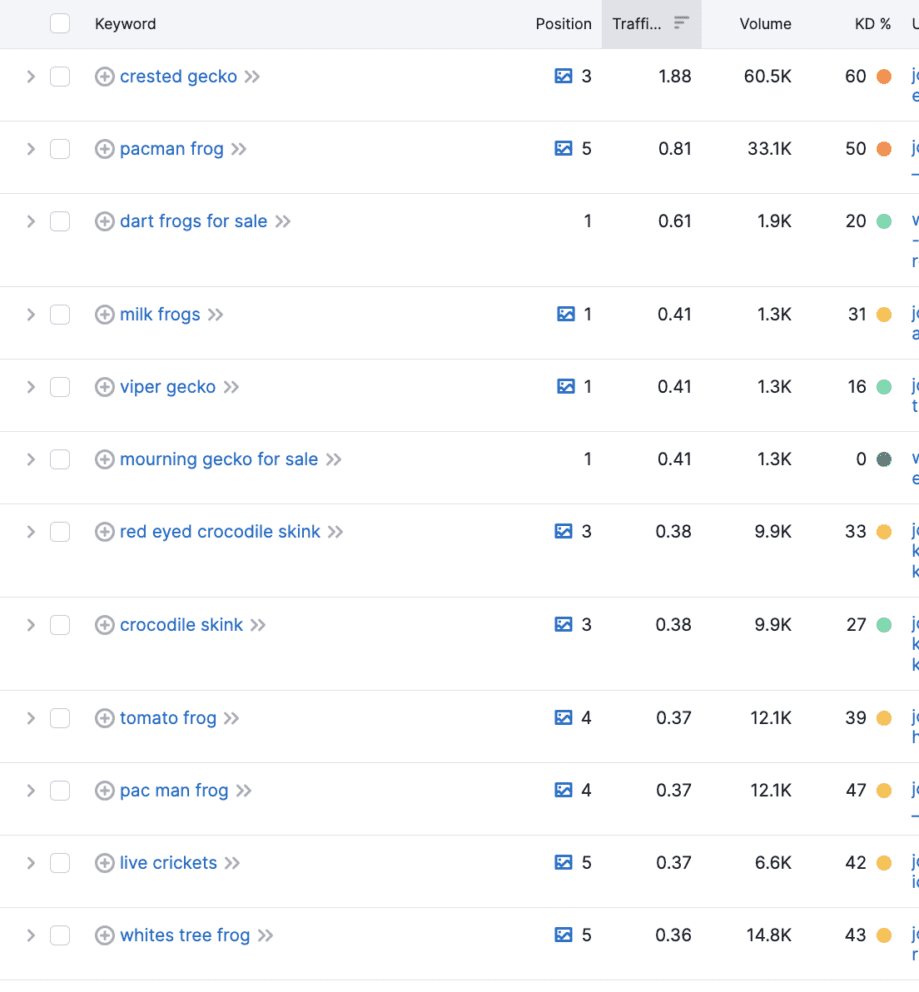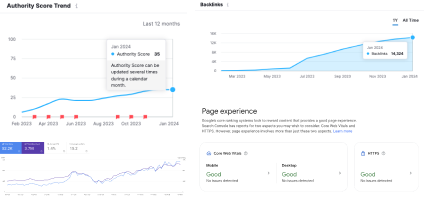The Power of Research in Driving Growth Marketing Strategies

In today’s fast-paced digital landscape, the integration of marketing research and analysis is not just beneficial but essential for robust growth marketing. This article explores how Firon Marketing leverages collaborative efforts across various departments – SEO, PPC, Social Media, Email Marketing, and Web Development – to craft and implement effective growth strategies.
Let’s delve deeper into each of these key areas, exploring how Firon Marketing’s integrated approach in SEO, PPC, Social Media, Email Marketing, and Web Development drives successful growth marketing strategies. Jump to any section of interest from our detailed table of contents below.
- Setting the Stage with Market Research
- The Critical Role of Foundational Market Research
- Methods and Tools for Market Data Analysis
- SEO: Leveraging Analytics for Organic Growth
- Competitive Analysis and Keyword Research
- Strategic Keyword Targeting and Optimization
- Content Development and Support for Pillar Pages
- Backlink Acquisition Strategies
- Tracking SEO Performance and Making Data-Driven Decisions
- PPC: Precision Targeting with Data
- Comprehensive Market Analysis for PPC
- Keyword Research and Strategic Selection for Paid Campaigns
- Ad Copy Optimization and A/B Testing
- Utilizing Advanced Analytics for PPC Decision-Making
- Conversion Tracking and Attribution Modeling
- Crafting Data-Driven PPC Campaigns
- Skillit Case Study
- Social Media: Cultivating Engagement through Insights
- Social Listening and Audience Analysis
- Strategies for Viral Marketing Campaigns
- Integrating Insights for Optimized Engagement
- Email Marketing: Segmenting and Personalizing with Purpose
- Data-Driven Email Segmentation Strategies
- Advantages of Segmented Emails
- Methods for Audience Segmentation
- Personalization in Email Marketing
- Email Marketing Success Story
- Conclusion
- Integrating Marketing Research Across Departments
- Invitation to Explore Firon Marketing
Setting the Stage with Market Research
The Critical Role of Foundational Market Research
Effective marketing begins with a deep understanding of the market. Foundational market research provides insights into customer behaviors, preferences, and trends, which are crucial for tailoring strategies across all marketing channels. This research forms the backbone of Firon Marketing’s approach, ensuring that every strategy is data-driven and targeted.
Methods and Tools for Market Data Analysis
Firon Marketing employs a diverse array of tools to effectively gather and analyze market data, ensuring our strategies are data-driven and impactful.
- Digital Analytics and SEO Tools: We utilize Google Analytics, SEMRush, and Google Trends for in-depth analysis of website traffic, keyword performance, and market trends. These tools are crucial for understanding user behavior and identifying high-potential SEO opportunities.
- Email Marketing Optimization: ‘Emails on Acid’ is essential for testing email rendering across different browsers and devices, ensuring optimal user experience. ‘NeverBounce’ aids in maintaining the quality of our email lists by verifying and cleaning bulk email addresses.
- Social Media Insights: Sprout Social is our tool of choice for social listening and reporting. It provides valuable insights into audience engagement and helps us tailor our social media strategies effectively.
- Content Creation and Management: The Adobe Suite is integral for creating high-quality, engaging content across various platforms. Asana facilitates content planning and collaboration, ensuring our teams are aligned and efficient in their content development efforts.
Each of these tools plays a vital role in our market data analysis process, helping us understand the competitive landscape, identify customer needs, and uncover emerging trends. This comprehensive approach allows us to make informed decisions and continuously optimize our marketing strategies across all channels.
trends and start building long term results.
SEO: Leveraging Analytics for Organic Growth
Competitive Analysis and Keyword Research
The SEO team at Firon Marketing utilizes comprehensive competitive analysis and keyword research to inform their content strategies. By understanding what competitors are doing and what potential customers are searching for, the team can create content that not only ranks well in search engines but also resonates with the target audience.
Practical Example
Consider, for instance, the scenario where we aim to sell frogs and related supplies online. The initial step involves identifying the market leaders, such as ‘Josh’s Frogs’ in this example. By analyzing their online presence, we can glean valuable insights. For instance, Josh’s Frogs holds an authority score of 40 and garners over 83,000 clicks per month. This data provides a benchmark for understanding the competitive landscape.

Keyword Analysis Strategy
The next crucial step is to dissect the keywords driving traffic to their site, particularly focusing on non-branded keywords. We achieve this by generating a report that filters out branded keywords (like “Josh’s Frogs”), targets keywords with a monthly search volume over 1,000, and sorts them by their contribution to traffic.
From this refined data, we can identify potential keywords to target. For example, if our focus is strictly on frogs and frog-related products, we would disregard irrelevant keywords like “crested gecko.” However, a keyword like “pacman frog,” with a substantial search volume of over 33,000 monthly and a moderate keyword difficulty (KD) of 50, emerges as a viable target. Notably, Josh’s Frogs ranks fifth for this keyword, indicating a competitive but achievable opportunity for us.

Prioritizing Keywords with Lower Difficulty
Further analysis reveals other keywords with lower KD, such as “dart frogs for sale” and “milk frogs.” Given their lower difficulty scores, these keywords present a more accessible entry point for our SEO efforts. By prioritizing these keywords, we can effectively establish a foothold in the market, gradually building our online presence and authority.
Strategic Keyword Targeting and Optimization in SEO
Strategic Keyword Targeting
Firon Marketing’s approach to keyword targeting is meticulously strategic, grounded in comprehensive competitive analysis and a careful selection process based on keyword difficulty and relevance. This method is particularly effective for penetrating and competing in niche markets. By initially focusing on less contested yet highly relevant keywords, such as “dart frogs for sale” and “milk frogs,” we lay a robust foundation for our SEO efforts. This strategy not only garners immediate results but also sets the stage for tackling more competitive keywords as our online authority and presence grow.
Master or Pillar Page Determination
Once the target keywords are identified, the next crucial step is to determine the master or pillar page for these keywords. This page is intended to be the primary solution that search engines present to users for the selected keywords. If such a page already exists on our website, our task is to optimize it comprehensively. This optimization includes incorporating the target keywords into various elements of the page, such as the URL, H1 header, subheaders, body copy, meta title, and meta description. The goal is to unequivocally signal to search engines that this page is the most relevant and authoritative solution for queries related to these terms.
Content Development to Support Pillar Pages
Supporting the pillar pages with additional content is a critical step in reinforcing their authority and relevance. This involves creating related content, such as care guides or habitat building guides, which not only provides value to the reader but also strategically includes internal links to the master pillar pages. This interconnected content strategy enhances the overall SEO structure, making the pillar pages more robust and authoritative in the eyes of search engines.
Backlink Acquisition for Pillar Pages
The final step in this SEO strategy is to focus on acquiring backlinks to these pillar pages. Backlinks from reputable and relevant sources further reinforce the authority of these pages. This process involves reaching out to industry influencers, participating in relevant online communities, and creating shareable content, all aimed at generating high-quality backlinks. This not only boosts the SEO performance of the pillar pages but also enhances the overall domain authority, contributing to the long-term success of our SEO strategy.
Through this comprehensive approach to keyword targeting, page optimization, content support, and backlink acquisition, Firon Marketing effectively enhances its online visibility and competitiveness in specific niche markets. This methodical and data-driven strategy ensures that our efforts in SEO translate into tangible results, driving traffic and engagement to our targeted pages.
Tracking SEO Performance: Utilizing Advanced Tools for Informed Decision-Making
In the realm of SEO, tracking and analyzing performance is as crucial as the initial strategy development. At Firon Marketing, we employ a suite of advanced tools to meticulously monitor our SEO efforts, ensuring that our strategies are not only effective but also continuously optimized. This section delves into how we use these tools to track various metrics and make informed decisions.
Comprehensive Toolset for Performance Tracking
Our arsenal includes renowned tools such as Google Search Console, Google Analytics, SEMRush, and BrightLocal. Each tool serves a unique purpose, providing us with a holistic view of our SEO performance.
- Google Search Console: This tool is pivotal for understanding how our site performs in Google search results. It provides insights into the search queries that bring users to our site, the pages that are most frequently clicked, and how our content appears in search results.
- Google Analytics: Analytics offers a deeper dive into user behavior on our website. It helps us track not just the number of clicks but also user engagement metrics like bounce rate, session duration, and pages per session.
- SEMRush: SEMRush is instrumental in competitive analysis and keyword research. It allows us to identify which keywords are driving traffic to our competitors and discover new opportunities for keyword targeting.
- BrightLocal: Specializing in local SEO, BrightLocal gives us insights into local search rankings, local citations, and online reviews, which are crucial for businesses targeting local markets.
Tracking Beyond Clicks: Keywords, Volume, Intent, and Conversions
Our approach to tracking SEO performance goes beyond mere click metrics. We delve into the nuances of keyword performance, search volume, user intent, and most importantly, conversions.
- Identifying High-Performance Keywords: We track which keywords are currently driving clicks to our site. This helps us understand what’s working and where to focus our content efforts.
- Uncovering High-Volume, High-Intent Keywords: We also identify keywords with high search volume and high user intent that are not yet driving traffic to our site. This insight is crucial for targeting untapped opportunities.
- Conversion Tracking: Perhaps the most critical aspect is tracking which keywords lead to conversions. Understanding which search queries result in sales or desired actions allows us to refine our SEO strategy with a focus on not just traffic, but meaningful engagement that contributes to the bottom line.
Making Informed Decisions Based on Data
The data gathered from these tools empowers us to make informed decisions. By analyzing which keywords are driving traffic and conversions, we can tailor our content strategy to focus on the most lucrative opportunities. This approach ensures that our SEO efforts are not just about increasing visibility, but about driving real business results.
- Content Strategy Refinement: Based on keyword performance data, we refine our content strategy to focus more on high-converting keywords and less on those that don’t drive meaningful engagement.
- SEO Strategy Adaptation: The insights from these tools also guide our overall SEO strategy. We continuously adapt our approach based on what the data tells us about market trends, competitor strategies, and changing user behaviors.
PPC: Precision Targeting with Data

In the dynamic landscape of digital marketing, the Ads/PPC team at Firon Marketing plays a pivotal role in driving growth for our clients’ brands. Our approach is rooted in data-driven marketing research, ensuring that every campaign is strategically crafted to maximize efficacy. In this section, we’ll explore how we integrate marketing research for growth marketing efficacy, drawing parallels to the SEO team’s methodology.
Comprehensive Market Analysis
Our team begins with a thorough examination of the market landscape. We identify key players in the industry and analyze their advertising strategies to gain insights into what works and what doesn’t. By understanding market trends, competitor ad copy, and targeting approaches, we position ourselves to make informed decisions that set the stage for effective paid campaigns.
Suppose our client operates in the tech accessories space. We would analyze competitors such as ‘TechGadget Hub’ to discern their advertising strategies. If they are running successful campaigns on platforms like Google Ads, we take note of the ad formats, keywords, and targeting parameters to inform our own approach.
Keyword Research for Paid Campaigns
We conduct meticulous keyword research to identify the most relevant and high-performing terms for paid advertising. Our focus is on non-branded keywords that align with the client’s goals, ensuring that we capture the attention of potential customers who may not be familiar with the brand.

Strategic Keyword Selection
Taking inspiration from the SEO team’s strategic keyword targeting, we carefully select keywords based on their relevance, search volume, and alignment with user intent. For instance, in the tech accessories example, keywords like “innovative phone gadgets” or “wireless earbuds deals” could be strategically chosen for their potential to drive targeted traffic and conversions.
Ad Copy Optimization and A/B Testing
After carefully selecting keywords, our team then focuses on crafting compelling ad copy. We leverage A/B testing to experiment with different headlines, ad text, and calls-to-action, refining our approach based on real-time performance data. In addition to ad copy testing, we’re also heavily involved in testing landing pages against each other to improve website CRO and ROAS. Recently our team has tested a new landing page for Skillit against our home page, which has led to a large increase in conversion-rate (more 30% than the alternative). The primary difference in the new landing page is that it is tailored for a specific segment of Skillit’s target market—which entails the entire state of Florida, vs the more generic home page. This iterative process ensures that our ads are not only visually appealing but also resonate with the target audience.
Continuous Improvement
Firon’s Ads/PPC team adapts and evolves ad copy based on performance metrics. If certain ad variations consistently outperform others, we allocate budget and resources accordingly, maximizing the impact of our paid campaigns.
Utilizing Advanced Analytics for Informed Decision-Making
We employ a suite of advanced analytics tools. These tools provide invaluable insights into the effectiveness of our campaigns, allowing us to make data-driven decisions for ongoing optimization. Utilizing GA-4 with the platform data for ad analysis allows us to merge user engagement data from ads with their subsequent actions within the platform. For example, by correlating audience details tracked in GA-4 with user conversions on the platform, we gain insights into the effectiveness of specific ad campaigns. This enables tailoring marketing campaigns to target these segments more precisely, delivering personalized content that resonate better with their preferences and behaviors.This insight could prompt a decision to revise ad content or targeting strategies to better align with user expectations, ultimately improving the conversion funnel and user experience.
Conversion Tracking and Attribution Modeling
Beyond click metrics, we delve into conversion tracking and attribution modeling. Understanding which keywords and ad creatives lead to desired actions allows us to allocate budget effectively and prioritize efforts that contribute to the client’s bottom line. Through our integrated analysis using GA-4 and platform data, we noticed that certain ad campaigns, particularly those emphasizing specific keywords and creative content, led to a higher rate of conversions within the platform. By employing attribution modeling, we identified that these successful conversions were often initiated by users who interacted with these ads before making a purchase or signing up for our service. The insight led to increased budget for successful campaigns and refined keywords, notably lifting conversion rates and optimizing ad spend, positively impacting our bottom line.
PPC Conclusion
Integrating marketing research into our Ads/PPC strategy at Firon Marketing is not just about placing ads; it’s about strategically positioning our clients for sustained growth. By harnessing the power of data, conducting comprehensive market analysis, and refining our approach through continuous optimization, our Ads/PPC team ensures that every advertising dollar invested translates into tangible business results. Our team builds brand visibility and drives conversions, collectively propelling our clients towards digital marketing success.
Crafting Data-Driven PPC Campaigns
Firon’s PPC team uses market research to create highly targeted campaigns. By analyzing data on customer acquisition cost (CAC), click-through rate (CTR), cost per click (CPC), and conversion rates, the team can craft campaigns that not only reach the target audience but also maximize budget efficiency.
Skillit Case Study
The Skillit campaign is a testament to Firon’s expertise. Starting with in-depth market research, the team developed and optimized PPC campaigns, leading to significant improvements in ad performance and ROI. This case study exemplifies the team’s ability to turn data into actionable insights.
View the Skillit PPC Case Study
Social Media: Cultivating Engagement through Insights
Social Listening and Audience Analysis
Harnessing Social Listening for Strategic Content Creation
At Firon, our social media strategy hinges on robust social listening and audience analysis. By employing tools like Brandwatch and Mention, we delve deep into understanding the conversations, sentiments, and trends surrounding our brand and industry. This granular insight into public perception and audience needs informs our content creation process, ensuring our messaging is not just heard but also resonates with our audience.
Example of Applied Audience Analysis
Collaborating with Firon Marketing, Baloo undertook a detailed analysis of their target audience, discovering that their core demographic comprised women aged 20 to late 30s. This group was actively seeking ways to support mental health and wellness, a need that was not being met by Baloo’s original social media approach.
View the Baloo Social media Case Study
Viral Marketing Campaigns
Capitalizing on Social Media Trends for Viral Impact
Our team’s expertise in identifying and leveraging social media trends has been a pivotal of our marketing successes. By keeping our finger on the pulse of social media, we can create content that not only aligns with but also amplifies these trends, significantly boosting our brand’s visibility and engagement.
Case Study of a Viral Campaign
Fantasy Guru, known for its expertise in fantasy sports, collaborated with Firon Marketing to revamp its Instagram strategy, targeting both traditional and modern sports enthusiasts. The new approach, focused on viral sports clips, engaging memes, and timely sports updates, led to impressive results. Within just three months, they saw a +2,136% increase in overall reach, engaging 1.4 million accounts, and a +2,725% rise in account engagement. Impressions surged to 1.6 million marking a +2,225% increase, alongside notable non-follower engagement and an organic follower growth of 13%. This strategic shift not only boosted Fantasy Guru’s social media presence but also repositioned it as a go-to source for entertaining and informative sports content.
View the Fantasy Guru Social Media Case Study
Integrating Insights for Optimized Engagement
Strategic Use of Insights in Content Strategy
Our social media team doesn’t just listen; we act on the insights. We tailor our content to address the gaps in audience knowledge or interests identified through social listening. This approach ensures our content is not only engaging but also adds value to our audience’s social media experience.
Collaboration for Enhanced Impact
The insights gleaned from social listening are not confined to our team. We share these valuable nuggets with other departments, like the SEO and Performance teams, to create a cohesive and comprehensive marketing strategy. This cross-departmental collaboration has led to more targeted and effective campaigns across the board.
trends and start building long term results.
Email Marketing: Segmenting and Personalizing with Purpose
Data-Driven Email Segmentation
The email marketing team at Firon uses data analysis to segment their audience effectively. By understanding user behaviors and preferences, they can tailor their email campaigns to different segments, resulting in higher engagement and conversion rates.
The Advantages of Segmented Emails
- Higher Open Rates: Imagine receiving content about hiking gear if you’re a yoga enthusiast. Not engaging, right? Segmentation ensures your emails resonate with recipients, leading to higher open rates.
- Improved Click-Through Rates: When the content speaks directly to your interests, you’re more likely to take action. Targeted emails see significant boosts in click-through rates, translating to more website visits and conversions.
- Enhanced Customer Engagement: By showing you understand your customers, you build trust and loyalty. Segmented emails feel personal, leading to increased engagement and a stronger brand relationship.
- Reduced Unsubscribe Rates: Nobody enjoys irrelevant bombardments. Segmentation ensures your emails are valuable, reducing the likelihood of unsubscribe requests and boosting list retention.
How to Segment Your Audience
The possibilities are endless! Here are some popular segmentation methods:
- Demographics: Age, gender, location, income – these can reveal basic preferences and purchasing habits.
- Behavioral Data: Website visits, purchase history, email engagement – understand how users interact with your brand.
- Interests and Preferences: Use surveys, quizzes, and website activity to discover passions and needs.
- Life Stage: Segmenting by life stage, like new parents or recent graduates, allows for tailored messaging.
Personalization Takes it to the Next Level
Segmentation lays the groundwork, but personalization paints the masterpiece. Inject dynamic elements like names, past purchases, or location mentions to make your emails feel like warm conversations.
Remember, data is your key to unlocking effective email marketing. Analyze your audience, segment strategically, and personalize for impact. You’ll watch engagement soar, conversions climb, and your customers fall in love with the feeling of truly being seen and understood.
This is just a glimpse into the power of segmentation and personalization. Dive deeper, experiment, and discover the magic of crafting emails that resonate, convert, and build lasting relationships with your audience.
Email Success Story
A notable success was a data-driven email re-engagement campaign that significantly boosted open rates and conversions. This campaign demonstrated the power of personalized content based on user data and preferences.
Instead of sending to everyone, we segmented our audience by engagement level, suppressing emails to those inactives. This simple segment targeting not only improved open rates by 4.83% but also doubled our click-through rate. With more users opening and clicking our emails.
Conclusion
The integration of marketing research across all departments at Firon Marketing is more than just a strategy; it’s a commitment to excellence and innovation in the digital marketing space. By harnessing the collective expertise and insights of our diverse teams, we are not only enhancing the quality of our content but also ensuring it resonates powerfully with our audience and drives tangible results.
Our collaborative approach, underpinned by data-driven analysis and continuous adaptation, positions us uniquely in the market. We are not just creating content; we are crafting a narrative that showcases our depth of knowledge, our understanding of market trends, and our dedication to delivering growth for our clients.
As we continue to refine our strategies and produce content that sets industry standards, we invite you to be a part of this exciting journey. Explore more about our innovative methods and how they can benefit your business by visiting Firon Marketing. Let’s collaborate to create marketing strategies that not only tell your story but also propel your business forward.
FAQ: Marketing Research and Growth Marketing
What is the significance of marketing research in growth marketing?
Marketing research is essential in growth marketing as it provides insights into customer behaviors, preferences, and market trends. This information is crucial for developing targeted and effective marketing strategies that resonate with the audience and drive growth.
How does SEO contribute to growth marketing?
SEO (Search Engine Optimization) contributes to growth marketing by improving a website’s visibility in search engine results. This involves keyword research, content optimization, and building backlinks. Effective SEO strategies attract more organic traffic, enhance brand visibility, and support overall marketing goals.
What role does PPC play in growth marketing?
PPC (Pay-Per-Click) advertising is a key component of growth marketing. It allows for precise targeting of audiences through paid ads, often leading to immediate traffic and conversions. PPC campaigns are data-driven, focusing on keywords, ad copy, and audience behavior to maximize return on investment.
How is social media used in growth marketing?
Social media in growth marketing is used to engage with audiences, build brand awareness, and drive traffic to websites or landing pages. Strategies include content creation, audience analysis, and leveraging social media trends to create viral marketing campaigns.
What is the importance of email marketing in a growth marketing strategy?
Email marketing is important in growth marketing as it allows for direct communication with customers. It’s used for segmenting audiences, personalizing messages, and nurturing leads through the sales funnel. Effective email marketing can lead to high engagement, customer retention, and increased conversions.
How do you measure the success of growth marketing strategies?
The success of growth marketing strategies is measured through various metrics such as website traffic, conversion rates, engagement rates on social media, email open and click-through rates, and overall ROI. Continuous monitoring and analysis of these metrics are essential for optimizing strategies and achieving growth objectives.
Can small businesses benefit from growth marketing?
Absolutely. Small businesses can benefit significantly from growth marketing by focusing on strategies that are scalable and cost-effective. Tailored SEO, targeted social media campaigns, and personalized email marketing can be particularly effective for small businesses looking to grow their presence and customer base.
How important is content creation in growth marketing?
Content creation is vital in growth marketing as it helps to attract and engage the target audience, build brand authority, and improve SEO. Quality content, whether it’s blog posts, videos, or social media posts, is key to capturing audience interest and driving marketing success.
What is the role of analytics in growth marketing?
Analytics play a crucial role in growth marketing by providing data-driven insights into customer behavior, campaign performance, and market trends. This information is used to make informed decisions, optimize marketing strategies, and ensure the best use of resources for maximum growth impact.
How does audience segmentation improve growth marketing efforts?
Audience segmentation improves growth marketing efforts by allowing marketers to tailor their messages and offers to specific groups. This personalization leads to higher engagement, better customer experiences, and increased likelihood of conversions, as messages are more relevant to each segment’s needs and interests.



